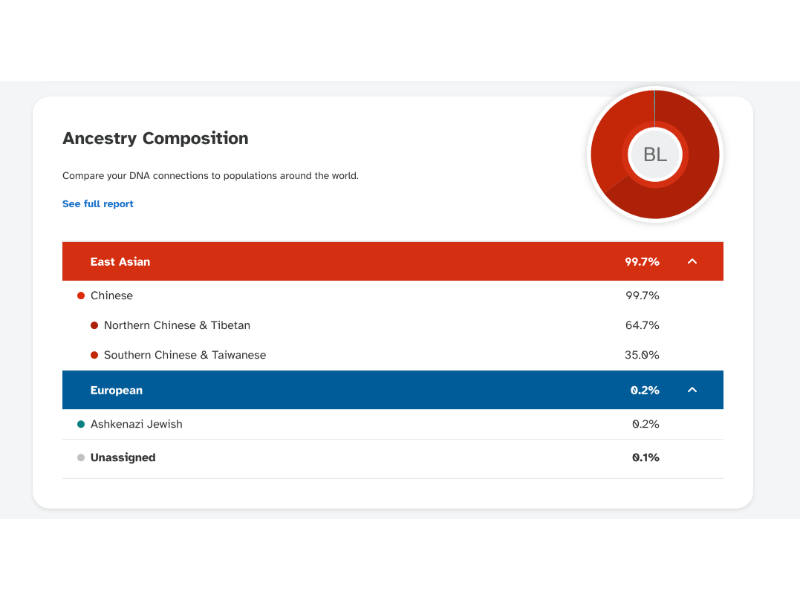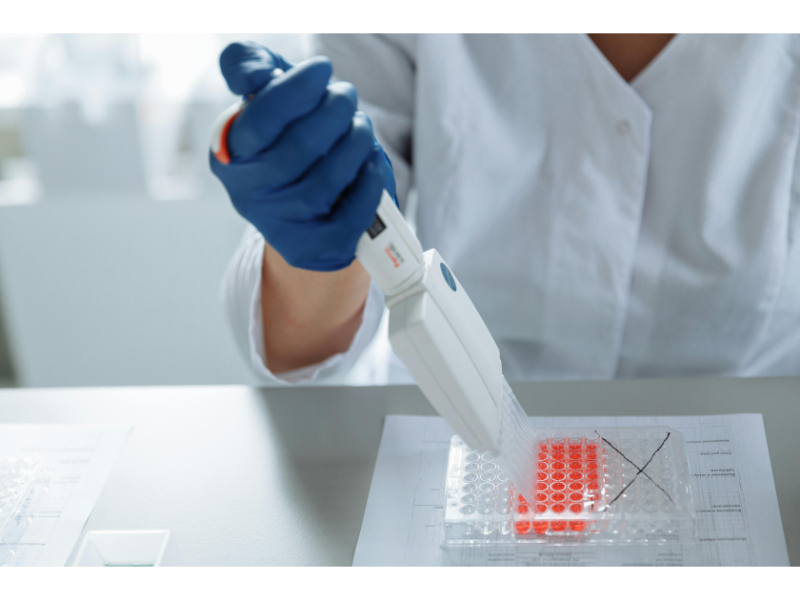- 23andMe is a genetic-lead consumer healthcare firm for DNA genetic testing.
- 23andMe underwent board resignations and financial struggles since 2021, concerns for users data security discussed.
- New press release on company website suggested that company regain compliance with Nasdaq listing requirement.
My experience with 23andMe
It was at my college sophomore year 2020, I came across an advertisement online on social media about 23andMe. The ad shows the report of how their ancestry service tells you where you origin, I was quite curious and ordered a kit right away. The kit had detailed instructions and everything was smooth. I mailed the sample and waited for my report.
Couple weeks later, the report arrived and I’m 99.7% East Asian with 64.7% being Northern Chinese and 35% Southern Chinese, aside from that I have a 0.2% percentage Ashkenazi Jewish. It was quite surprising to see your ancestry broken down in such a way and I slightly remembered when I was in the US. I have a little Korean ethics. The website did remind that ancestry composition is a living analysis which can change over time when new overlapping data comes in to update.

My first encounter with 23andMe is just the ancestry report. They did mail me about my genetic relatives every now and then and their new product line to my inbox. Ancestry service is the most basic service they had back in 2009, and their primary focus when the company was founded, due to the regulation of FDA.
23andMe services
23andMe launched a health + ancestry service to discover customer’s health condition and body composition with ancestry and traits report. Their premium kit includes everything from the 23andMe+ with health track plans, helping customers spot potential dieases and establish healthier lifestyles. The report lists out the prescriptions you need based on your health conditions. They also launched a 23andMe+ total health line for more specialized and sophisticated services for their memberships. The DNA company was quite a hit in the first two years of their operation, until recently.
What happened to 23andMe?
According to CNBC the youtube analysis video they published two weeks ago(video below), the company’s stock dropped down from the June of 2021 to 2024 close to $0.27 dollar per share. The company’s CEO is requested to provide an action plan by November this year to avoid the consequence of delisting from Nasdaq. As the company turns from a strike hit of making genetic ancestry tests at a lower price and accessible to all customers, it struggles to find and develop new profitable product lines in support of research, resulting in huge amounts of net loss in the third year and onwards. That was in 2021, the stock plummeted by 99%, forecasting bankruptcy and a delist before 2025. Although the new product line targeting weight loss launched in the effort of saving the decline, it didn’t work. Following the key company board members resign in September 2024 and the stock’s decline, the genetic data the company collected from their past customer’s belonging remains a question.
There’s many past videos and blogs by their customers to share how 23andme’s DNA genetic testing helps them spot dieases and find their relatives. A famous case will be Mathew Knowles, a breast cancer survivior and a brand ambassador of 23andme. He found out he had a BRCA2 gene variant after the diagnosis. Traditional healthcare and medical examination may be inaccessible to all. The kit of 23andMe enhances the community outreach to people without such health services available in their area to spot the potential health issues and prevent them early. The company, like many other ones, never profits. CEO Anne Wojcicki claims she is committed to the customer’s privacy and will not use any customer’s genetic data without their consent.
Pop quiz
How many services does 23andMe offer?
A. 6
B. 3
C. 1
D. 4
Answer is at the end of this feature.
23andMe data breach and response
23andMe experienced a significant data breach in October 2023, exposing genetic information and personal details of millions of users. This breach was attributed to a credential-stuffing attack, where hackers used compromised credentials to gain access to accounts. Once inside, they were able to scrape data from 14,000 accounts and expand their reach to approximately 6.9 million users, primarily due to the “DNA Relatives” feature that links users with genetic matches. Leaked information included sensitive genetic profiles of Ashkenazi Jewish and Chinese heritage users, raising concerns about both privacy and targeted misuse of this information.
Also read:Celebrating Cybersecurity Awareness Month to build a secure digital future
In response, 23andMe enforced password resets, introduced mandatory two-factor authentication, and temporarily restricted certain features like raw data downloads. The company has since faced legal challenges, culminating in a $30 million settlement in 2024 to address damages associated with the breach. This settlement aims to help users with costs related to identity theft, physical security, and mental health support. Additionally, following the breach, several board members resigned amid talks of taking the company private.
23andMe is very independent and committed to focusing on transparency.
Anne Wojcicki, CEO of 23andMe.
Also read:Macquarie secures A$450M refinancing for data centre expansion
The breach highlighted the high value and immutable nature of genetic data, which is challenging to secure due to its sensitivity and potential uses in identity theft and more targeted, sophisticated attacks. The event also emphasizes the need for robust data protection measures and policies as genetic data collection and usage continue to grow in fields like healthcare and precision medicine.
Answer to the pop quiz is D.

